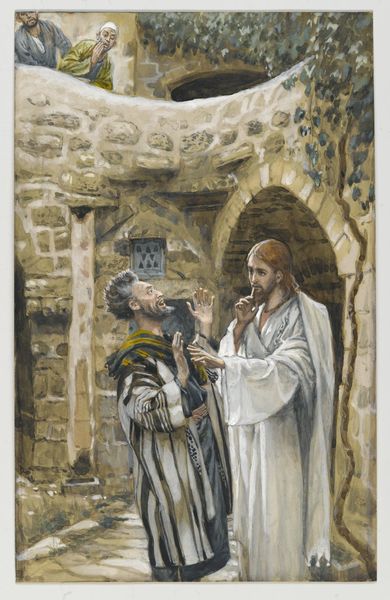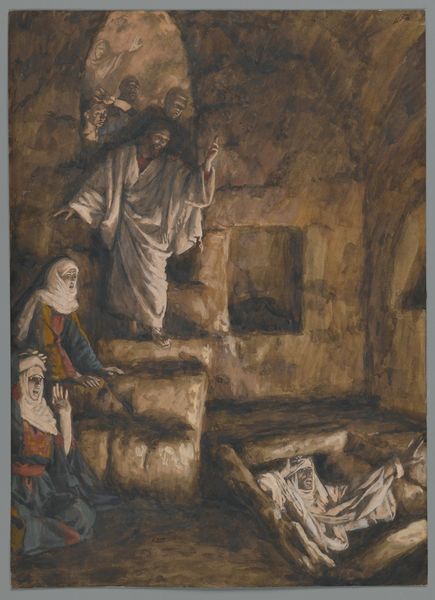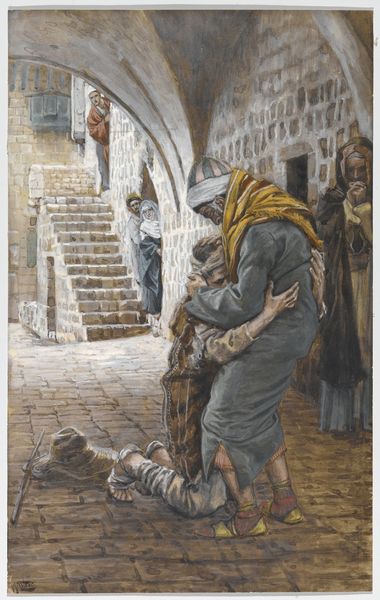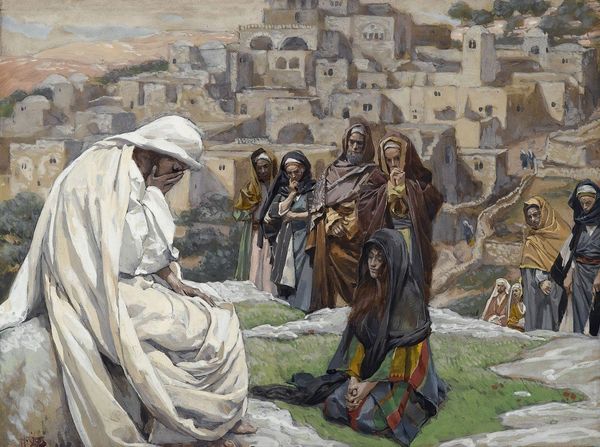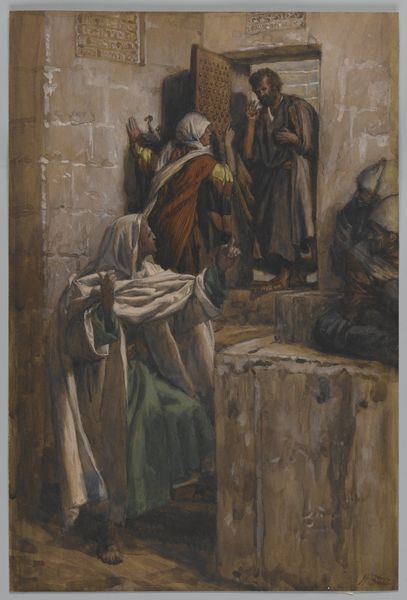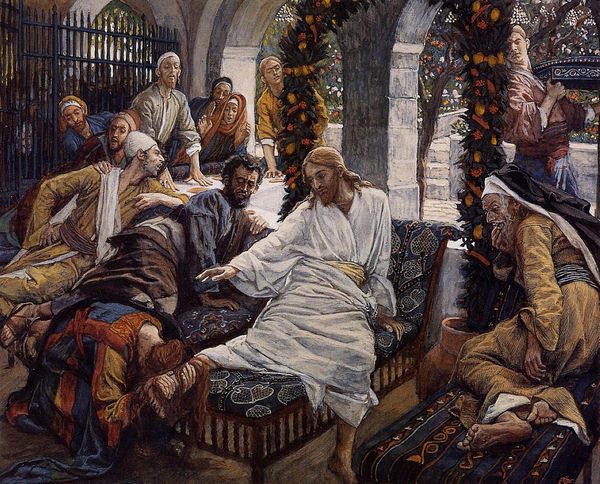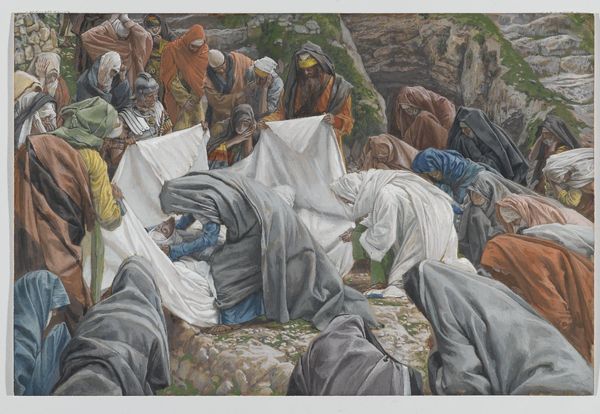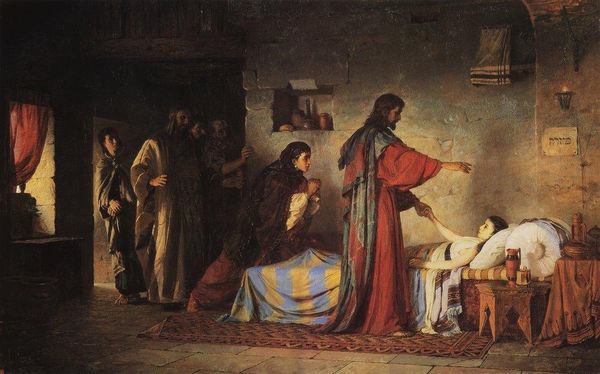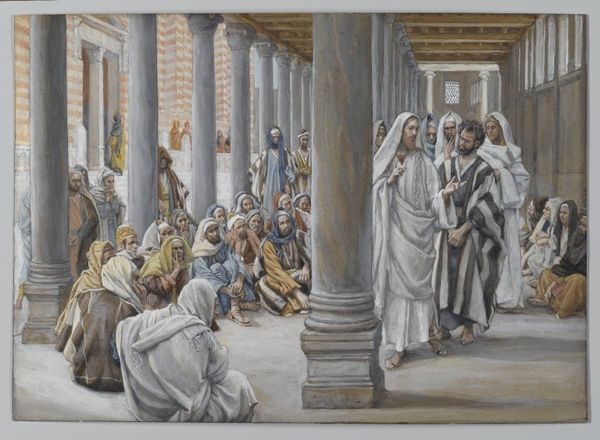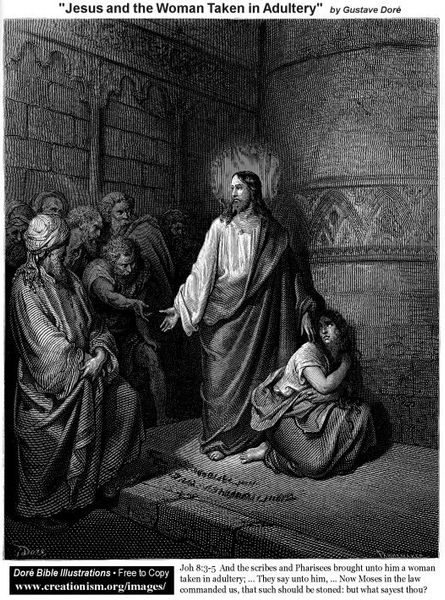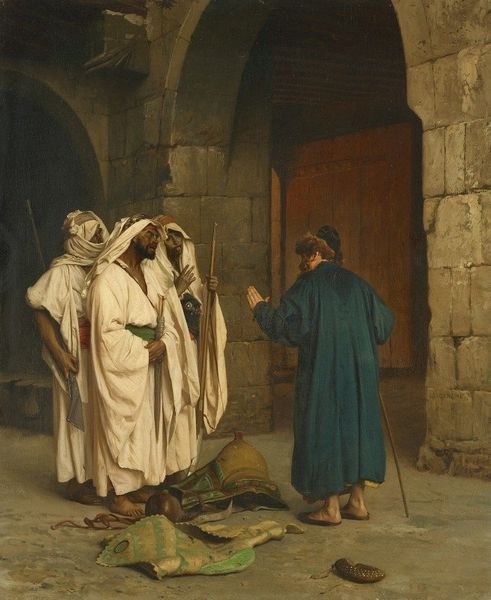
The Healing of Peter's Mother-in-law (La guérison de la belle-mère de Pierre
0:00
0:00
painting, watercolor
#
narrative-art
#
painting
#
holy-places
#
charcoal drawing
#
oil painting
#
watercolor
#
watercolour illustration
#
history-painting
#
academic-art
#
realism
Copyright: Public domain
Editor: This is "The Healing of Peter's Mother-in-law" by James Tissot, currently housed in the Brooklyn Museum. The artist rendered the scene primarily with watercolor, and there's a gentle, almost domestic feel to it, despite the sacred subject. What strikes me is how…ordinary everyone looks. How do you interpret this work? Curator: Tissot’s rendering indeed presents a very human, accessible Jesus, challenging the often-aloof representations of religious figures prevalent in art history. I wonder, how does Tissot, a 19th-century artist, disrupt the established visual language surrounding religious scenes, and how can we understand that through the lens of colonial narratives and race? Editor: Colonial narratives? Curator: Absolutely. Think about the Western gaze. Tissot aimed for accuracy in depicting the scene, even traveling to the Middle East. But what does "accurate" mean when filtered through a Western lens? How does that attempt at realism reinforce or challenge existing power dynamics and racial stereotypes about the "Holy Land" and its people? Editor: So, you’re saying the "ordinary" quality might inadvertently exoticize the scene further by emphasizing difference, while claiming authenticity? Curator: Precisely. It prompts a critical inquiry: who has the authority to represent these narratives, and what are the implications of that representation? Look at the marginal position of the women. Even in a painting named for a miracle performed on her, is it enough? Or is this picture mostly about reinforcing the image of a White Jesus? Editor: It makes you consider the choices the artist made, and how those choices, however well-intentioned, carry a lot of cultural baggage. I'll definitely be looking at religious art differently now. Curator: Agreed, seeing Tissot’s work, with both his intended messages and its embedded biases exposed, expands my critical perspectives about historical images, and how to consider the nuances of Western artistic views on religion.
Comments
No comments
Be the first to comment and join the conversation on the ultimate creative platform.
